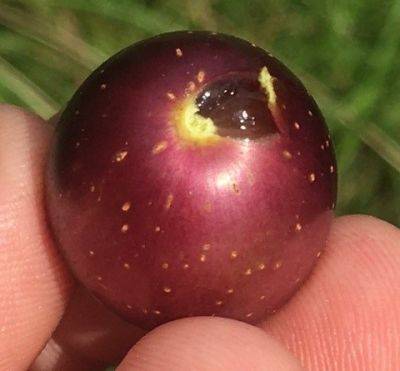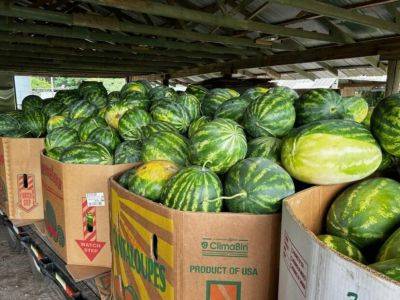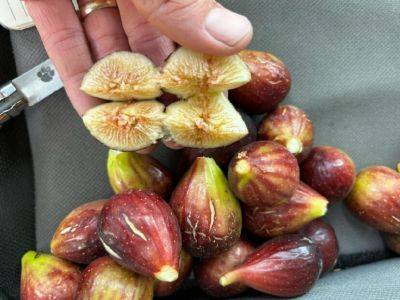Zack Snipes
SC Fruit and Vegetable Field Report – March 21, 2023
24.07.2023 - 11:50 / hgic.clemson.edu
Sarah Scott reports, “Temperatures dropped below freezing along the Ridge two mornings last week. We’ve been checking peaches over the past few days to assess the damage. Right now, it seems a lot of early varieties will be hit pretty hard. Just from what I’ve checked, if there were still blooms present, there was some protection from the cold, but if there was no petal or shuck present, the fruit was very vulnerable and suffered damage. It will still take some time to know the extent of damage to the peach crop, but it is safe to say we did receive damage. We still have below-freezing temperatures in the forecast, so we will just have to wait a bit to really know the crop outlook. Strawberries were covered for the cold mornings last week. These crops look good after removing the covers. It’s important to maintain a good spray schedule and sanitation as best you can in between covering and uncovering.”
Bruce McLean reports, “Monday night/Tuesday morning looks like it is going to be another frosty one for much of the state. Just like last week, tonight’s freezing temps are going to be accompanied by calm wind conditions. These are the perfect conditions to do frost/freeze protection (overhead water for blueberries and strawberries, row covers on strawberries, wind machines for peaches, nectarines, etc.). After tomorrow morning, the forecast looks to be in a warming trend for the foreseeable future. Keep your fingers crossed that this will be our last chance of frost. It looks like we somewhat escaped cold injury from last week’s cold temperatures. Blueberries and peaches seem like they got the worst of it due to being so far along in flowering and fruiting. Orchards that had frost protection seemed to escape most injury.
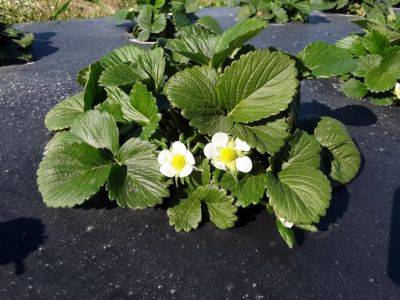
SC Fruit and Vegetable Field Report March 1, 2021
Rob Last reports, “Following a few days of warmer conditions, crops are moving on strongly. Flowering and fruit set is occurring in strawberry crops. At present, spider mites in treated crops are at very low populations, but with warmer weather, populations can increase rapidly. As we are entering flowering and fruit set, sanitation and fungicide applications will be required to keep gray mold managed. Remember to rotate FRAC codes to avoid resistance build-up. Fertigation is being applied, and it will be well worthwhile taking a tissue test from crops. Blueberries in the area are showing bud swell with early varieties showing open flower.”
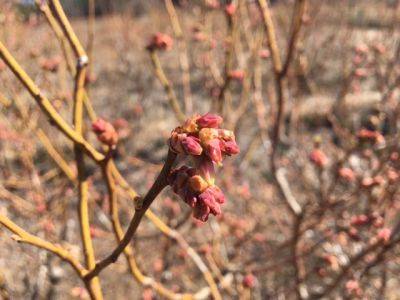
SC Fruit and Vegetable Field Report March 8, 2021
Zack Snipes reports, “We had some sunshine last week, which really brightened everything up. The last few nights have been cool, with some frost on the ground in the mornings. Things are starting to green up, and fields are drying out enough to plant. We are still direct-seeding crops around the region and will begin transplanting tomatoes in some areas this week. I spent last week checking strawberry fields to make sure things were good to go before they really bust out. I have been helping folks calibrate their drip fertigation systems for the upcoming season. If you think you need a hand with this, please let me know. Dialing in exactly how much fertilizer to use each day or week can really increase yields and lessen the amount of fertilizer that is leached. Leaching fertilizer means your plants aren’t taking it up, thus costing you money.”
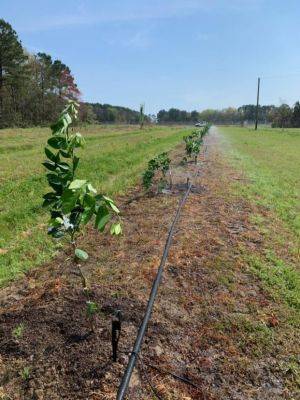
SC Fruit and Vegetable Field Report March 29, 2021
Rob Last reports, “Strawberry crops continue to develop well with sustained flowering and fruit set. Early crops are ripening well, with crops coming to market. Just a note of caution, the weather last week can be conducive to gray mold development; fungicide programs will be key. Thrips are active in some crops, so keep scouting. Melon transplants are going in the ground over the last week, with development looking very promising. Peaches in the area are all but finished flowering with a great fruit set. Finally, as we are looking at a cooler week for flowering fruit crops, keep an eye on the forecasted temperatures to determine if any protection will be required. Fruit and closed buds can tolerate cooler temperatures than flowers, but damaged flowers can increase gray mold development.”

SC Fruit and Vegetable Field Report March 22, 2021
Zack Snipes reports, “We got some needed rain, but we got a lot of it in a short amount of time. Winter peas and spring-planted brassicas are looking good. Tomato and squash are in the ground on some farms, but because of the cooler weather and soil temperatures, they haven’t really taken off yet. I see a lot of brassica fields leftover from the fall. These fields are harboring all of our insects and diseases that we will have to fight this coming season. Mow these fields down and turn them under. Do not leave them. I am seeing lots and lots of diamondback moths and black rot in these leftover fields. Some more sad news this week from the Lowcountry as Mr. Adair McKoy, Sr. passed away this past week. Mr. McKoy was full of wisdom and had years and years of practical farming knowledge that he loved sharing with others. Never did I visit him when I didn’t learn something new. His love and care for the land was truly inspirational.”
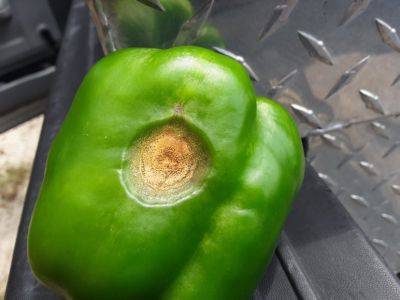
SC Fruit and Vegetable Field Report June 21, 2021
Rob Last reports, “Given the rainfall and humidity levels, we are seeing increases in foliar and fruit diseases on a range of crops. This includes cottony leak in cucumbers, anthracnose in peppers, tomatoes, and cucurbits. Also, please be aware cucurbit downy mildew is very active now. As a result, it is going to be really important to maintain fungicide programs in both a timely manner and to be robust. That being said, we have some great quality melons, both cantaloupe and watermelons, coming to harvest, as well as good volumes of quality peaches, blackberries, and a host of other vegetable crops.”
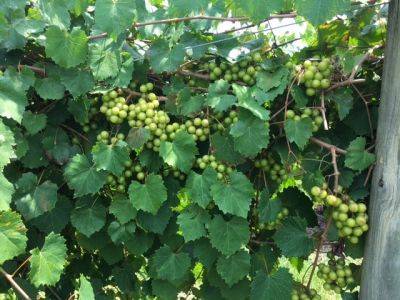
SC Fruit and Vegetable Field Report – July 26, 2021
Zack Snipes reports, “We are in a summer weather pattern with warm, muggy days and occasional thunderstorms. Most crops have finished up or are in the process. Now is a great time to sit down and do some crop planning and field rotation planning. I collected many soil and root tissue samples lately and had them analyzed for nematodes. I was surprised at how many nematodes were present in the fields. Nematodes can interfere with growth, cause stunting, and lower overall yields. Sometimes the symptoms of nematodes can be very discrete, so sampling right now is the best way to get a baseline of your populations and how to properly manage and rotate fields. If left unchecked, thousands of dollars are wasted before the first seed is planted into a field.”

SC Fruit and Vegetable Field Report October 11, 2021
Rob Last reports, “We are progressing well with preparations for strawberry planting. Some plants are due to be delivered this week. Remember, if fumigants have been used, check to ensure the products have dissipated to prevent damage to the transplants. The same is true to make sure planting restrictions on any pre-emergence herbicides applications are observed. Always refer to the label. Finally, remember to check your plants carefully for pest and disease inoculum from the nursery. Planting any disease or pest-infected plants will lead to a more challenging growing season. If you require any help, please reach to Extension Agents.”
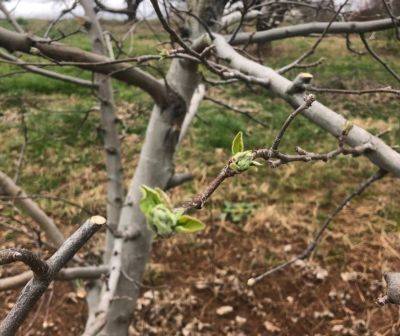
SC Fruit and Vegetable Field Report- March 14, 2022
Dr. Matt Cutulle reports, “I saw my first nutsedge plants this year pop up in the plastic mulch of a fellow researcher’s trial last week in Charleston. Soil temperatures in plastic mulch systems are going to be higher, which may lead to earlier sprouting of yellow nutsedge tubers. New tubers begin forming four to six weeks after a new shoot emerges. Individual nutsedge plants may eventually form patches 10 feet or more in diameter, thus it is important to practice field sanitation once an infestation is recognized.”
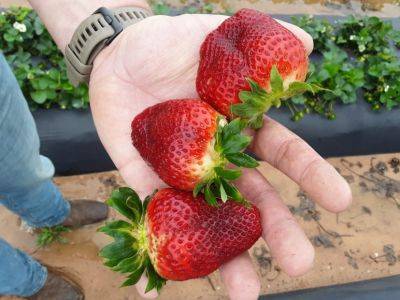
SC Fruit and Vegetable Field Report March 28, 2022
Rob Last reports, “The first of this season’s strawberries are coming to market with good quality. Growers still need to be very mindful of spider mites. Populations are around in the area but are variable. As we get into harvest season, gray mold management will be critical, so sanitation and appropriate fungicide applications will be needed. Otherwise, preparations for watermelon planting and some early cantaloupes have been sown. Damage assessments on later variety peaches will continue.”
